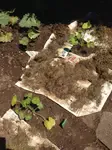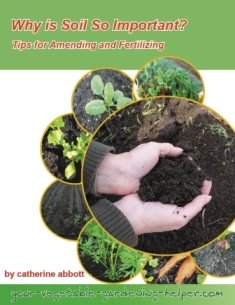Vertical Vegetable Gardening
Vertical vegetable gardening is an innovative and efficient way to maximize limited space, improve plant health, and enhance aesthetic appeal. By growing plants upwards rather than outwards, you can make the most of small areas, such as balconies, patios, or even indoor spaces. This method is particularly useful for urban gardeners and those with limited yard space. Understanding the different types of plants suitable for vertical gardening—twining plants, tendril plants, and plants that must be staked or tied—is essential for success.
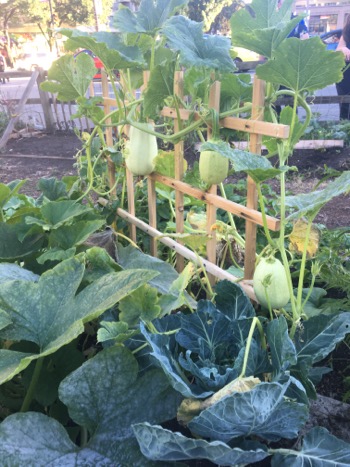 Squash for Vertical Vegetable Gardening
Squash for Vertical Vegetable GardeningI have used vertical growing in my greenhouse to grow my tomatoes as seen in the picture below. This makes the fruit easier to pick, keeps them off the ground and allows more circulation around the plant which keeps the plants and fruit healthier.
I have grown my cucumbers on trellis, again similar to the tomatoes it keeps them off the ground, they grow straighter and in my experience generally healthier.
Peas are a natural vertical upright growing plant, however supporting them with stakes will allow them to grow taller with a stronger stem. Beans grow very similarly to peas so support them to grow more vertical as well.
Twining Plants
Twining plants, also known as climbers, grow by wrapping their stems around supports such as trellises, poles, or fences. These plants do not require additional tying as their natural growth habit allows them to secure themselves to structures.
Some examples are: Morning glories, pole beans, and wisteria.
Advantages:
- Minimal maintenance: Once established, twining plants often require little intervention.
- Decorative: These plants can create lush, green walls or flowering displays.
Considerations:
- Support structures: Ensure your support is strong enough to handle the weight and growth of the plant.
- Space planning: Twining plants can become invasive if not properly managed.
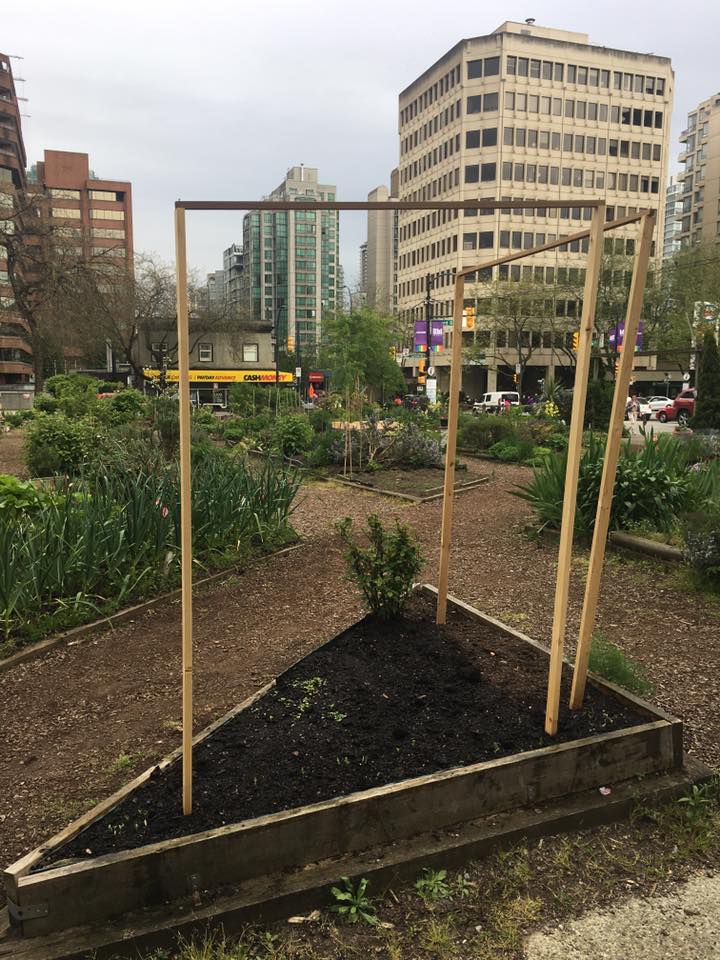 Setting up trellis for cucumbers.
Setting up trellis for cucumbers.Tendril Plants
Tendril plants use specialized structures called tendrils to grasp and climb supports. Tendrils are thin, coiling extensions that wrap around anything they touch, allowing the plant to anchor itself and grow upwards.
Some of examples: Peas, cucumbers, and passionflower.
Advantages:
- Self-supporting: Tendril plants naturally cling to supports, reducing the need for ties.
- Efficient space use: Ideal for small spaces, as they can cover vertical areas quickly.
Considerations:
- Fragility: Tendrils can be delicate and may need careful handling during the initial stages of growth.
- Support selection: Use netting, trellises, or wire mesh to provide adequate grip for tendrils.
Plants That Must Be Staked or Tied
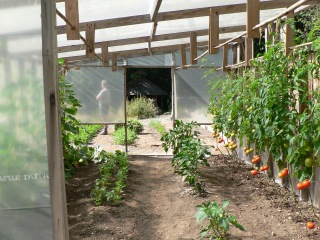 Growing Tomatoes
Growing TomatoesCertain plants do not have natural climbing abilities and require additional support through staking or tying. These plants typically have heavier fruits or a growth habit that causes them to sprawl if not properly supported.
Some examples are: Tomatoes, peppers, and some types of squash.
Advantages:
- Versatility: Can grow a wide variety of plants that would otherwise take up significant ground space.
- Controlled growth: Staking or tying helps manage plant shape and size, improving air circulation and sunlight exposure.
Considerations:
- Maintenance: Regular checking and adjusting of ties or stakes are necessary as the plant grows.
- Initial setup: Requires more effort to set up stakes and ties compared to natural climbers.
Tips for Successful Vertical Vegetable Gardening
1. Choose the Right Support: Select appropriate supports based on the type of plants you are growing. Ensure they are sturdy and capable of bearing the weight of mature plants.
2. Plan Your Layout: Consider the growth habit of your plants and plan the arrangement accordingly. Allow adequate space between plants to avoid overcrowding.
3. Regular Maintenance: Keep an eye on your vertical garden, adjusting supports as needed and pruning to maintain healthy growth.
4. Watering and Feeding: Vertical gardens can dry out faster than traditional gardens. Ensure consistent watering and provide nutrients to keep your plants thriving.
5. Sunlight and Placement: Position your vertical garden to maximize sunlight exposure, which is crucial for the health of most plants. They can also offer shade for plants that may need it.
Vertical gardening offers a practical solution for gardeners with limited space and provides a visually appealing way to grow a variety of plants. Most of us want a beautiful garden to show off to our family and friends. Using structures for growing a vertical vegetable garden of fruits, flowers or perennials can add design and structure to your garden.
By understanding the differences between twining plants, tendril plants, and those that require garden stakes or tying, you can create a thriving vertical garden that suits your space and gardening goals.
Return from Vertical Vegetable Gardening to Vegetable Gardening Tips
Recent Articles
-
Organic Gardening soil amendments - List of material?
Aug 09, 25 10:57 AM
What materials are best used as organic gardening soil amendments? -
Tips for disease control in your vegetable garden
Jul 14, 25 11:15 AM
Easy tips for disease control to keep your vegetable growing its best. -
Joy of vegetable Gardening
Jul 14, 25 11:01 AM
Everything you need to know is right here to have Joy of Vegetable Gardening
